You plan to deploy several Azure virtual machines.
You need to ensure that the services running on the virtual machines remain available if a single data center fails.
What are two possible solutions? Each correct answer presents a complete solution.
Answer:
AD
Reference:
https://docs.microsoft.com/en-us/azure/virtual-machine-scale-sets/overview https://docs.microsoft.com/en-us/azure/virtual-machines/windows/regions
HOTSPOT -
To complete the sentence, select the appropriate option in the answer area.
Hot Area:
Answer:

Azure automatically routes traffic between subnets in a virtual network. Therefore, all virtual machines in a virtual network can connect to the other virtual machines in the same virtual network. Even if the virtual machines are on separate subnets within the virtual network, they can still communicate with each other.
To ensure that a virtual machine cannot connect to the other virtual machines, the virtual machine must be deployed to a separate virtual network.
Reference:
https://docs.microsoft.com/en-us/azure/virtual-network/virtual-networks-udr-overview
DRAG DROP -
Match the Azure service to the appropriate description.
To answer, drag the appropriate service from the column on the left to its description on the right. Each service may be used once, more than once, or not at all.
NOTE: Each correct match is worth one point.
Select and Place:
Answer:

HOTSPOT -
For each of the following statements, select Yes if the statement is true. Otherwise, select No.
NOTE: Each correct selection is worth one point.
Hot Area:
Answer:

Box 2: Yes -
Usage scenarios for the hot access tier include:
✑ Data that is in active use or is expected to be read from and written to frequently
✑ Data that is staged for processing and eventual migration to the cool access tier
Box 3: No -
Usage scenarios for the cool access tier include:
✑ Short-term backup and disaster recovery
✑ Older data not used frequently but expected to be available immediately when accessed
Large data sets that need to be stored cost effectively, while more data is being gathered for future processing
Reference:
https://docs.microsoft.com/en-us/azure/storage/blobs/storage-blob-storage-tiers
What is the most severe failure from which an Azure Availability Zone can be used to protect access to Azure service?
Answer:
D
Availability zones expand the level of control you have to maintain the availability of the applications and data on your VMs. An Availability Zone is a physically separate zone, within an Azure region. There are three Availability Zones per supported Azure region.
Each Availability Zone has a distinct power source, network, and cooling. By architecting your solutions to use replicated VMs in zones, you can protect your apps and data from the loss of a datacenter. If one zone is compromised, then replicated apps and data are instantly available in another zone.
Reference:
https://docs.microsoft.com/en-us/azure/virtual-machines/availability
You need to purchase a third-party virtual security appliance that you will deploy to an Azure subscription.
What should you use?
Answer:
C
Reference:
https://docs.microsoft.com/en-us/azure/cost-management-billing/manage/ea-azure-marketplace
DRAG DROP -
Match the serverless solution to the correct characteristic.
To answer, drag the appropriate serverless solution from the column on the left to its characteristic on the right. Each serverless solution may be used once, more than once, or not at all.
NOTE: Each correct match is worth one point.
Select and Place: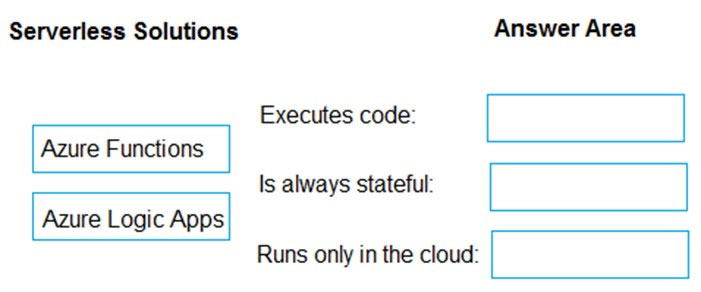
Answer:
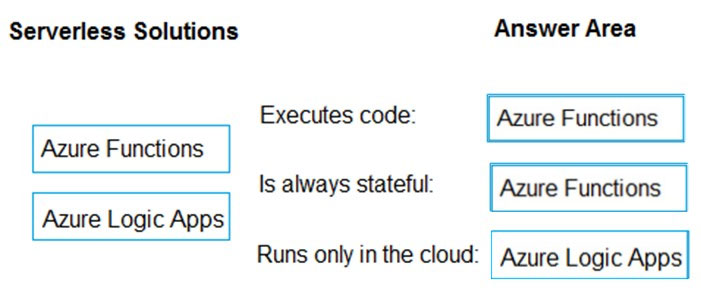
Box 1: Azure Functions -
Azure Functions allows you to implement your system's logic into readily available blocks of code called "functions". Different functions can run anytime you need to respond to critical events.
Box 2: Azure Functions -
Azure Logic Apps can have multiple stateful and stateless workflows.
Box 3: Azure Logic Apps -
Azure Logic Apps is a cloud-based platform for creating and running automated workflows that integrate your apps, data, services, and systems.
Reference:
https://docs.microsoft.com/en-us/azure/logic-apps/logic-apps-overview https://docs.microsoft.com/en-us/azure/azure-functions/functions-overview
DRAG DROP -
Match the Azure governance feature to the correct description.
Instructions: To answer, drag the appropriate feature from the column on the left to its description on the right. Each feature may be used once, more than once, or not at all.
NOTE: Each correct match is worth one point.
Select and Place:
Answer:

Reference:
https://docs.microsoft.com/en-us/azure/governance/blueprints/overview https://docs.microsoft.com/en-us/azure/governance/policy/overview https://docs.microsoft.com/en-us/azure/azure-resource-manager/management/tag-resources?tabs=json https://docs.microsoft.com/en-us/azure/azure-resource-manager/management/lock-resources?tabs=json
HOTSPOT -
Select the answer that correctly completes the sentence.
Hot Area: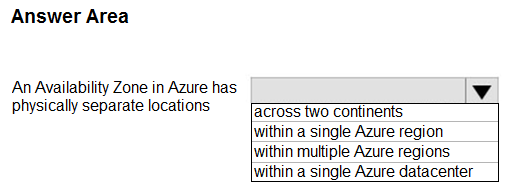
Answer:
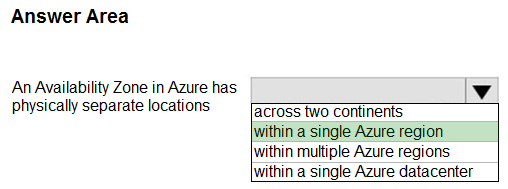
Box: within a single Azure region
Azure availability zones are physically separate locations within each Azure region that are tolerant to local failures.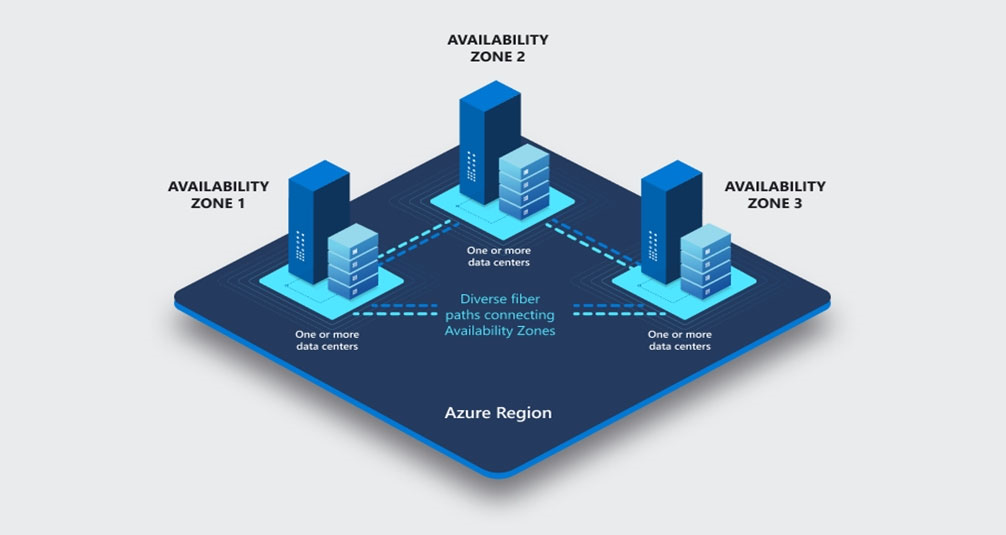
Reference:
https://docs.microsoft.com/en-us/azure/availability-zones/az-overview
DRAG DROP -
Match the Azure services to the correct descriptions.
Instructions: To answer, drag the appropriate Azure service from the column on the left to its description on the right. Each service may be used once, more than once, or not at all.
NOTE: Each correct match is worth one point.
Select and Place:
Answer:

Box 1: Azure virtual machines -
Box 2: Azure Container instances
Azure Container Instances (ACI) is a managed service that allows you to run containers directly on the Microsoft Azure public cloud, without requiring the use of virtual machines (VMs).
Develop apps fast without managing virtual machines or having to learn new toolsג€"it's just your application, in a container, running in the cloud.
Box 3: Azure App Service -
Azure App Service is a fully managed platform for building web applications.
Applications run and scale with ease on both Windows and Linux-based environments.
Box 4: Azure Functions -
Azure Functions (from Microsoft Azure) is a cloud-based serverless service that allows running event-triggered code in a scalable way without providing or managing infrastructure.
Reference:
https://docs.microsoft.com/en-us/azure/container-instances
https://azure.microsoft.com/en-us/services/app-service/
https://revdebug.com/blog/what-are-azure-functions